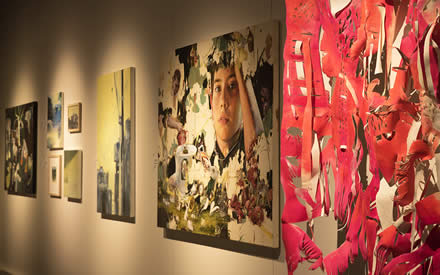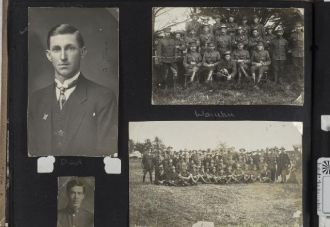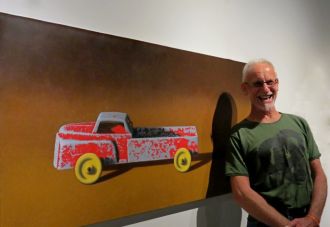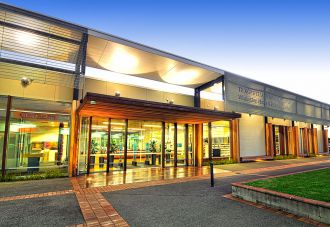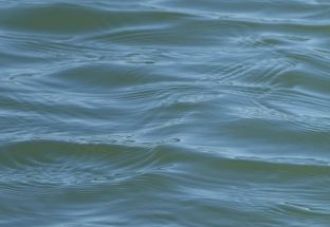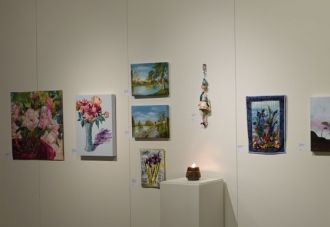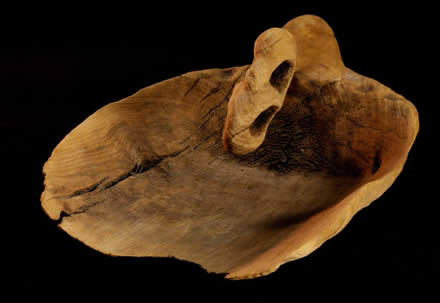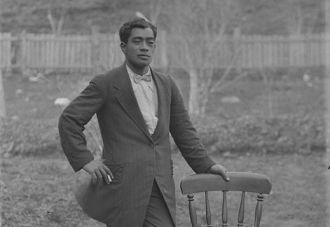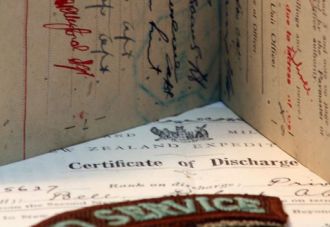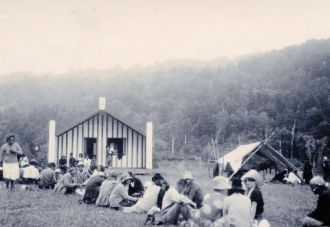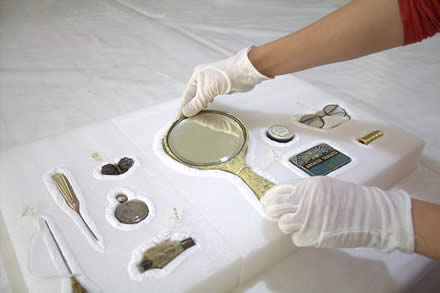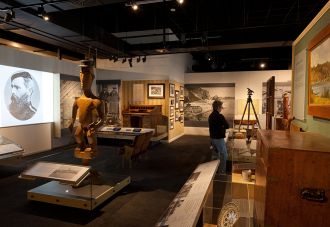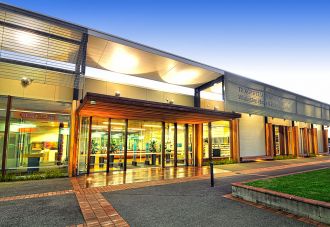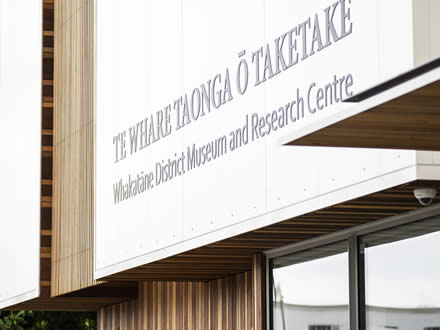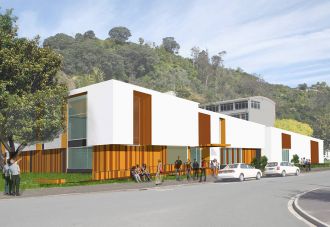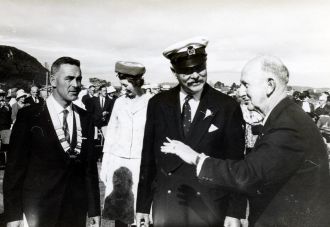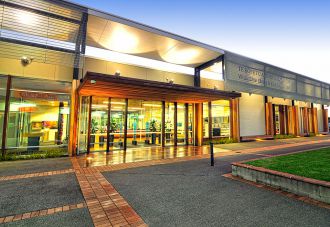Date:
Hina Sings... was borne out of the time of COVID lockdowns across the planet. As borders slammed shut - and Sue Pearson and Pauline Reynolds were separated from their homeland, Norfolk Island, and their sons in Hawai’i and Tahiti - a conversation began during long walks over the lands they were living on: Sue in Whakatāne, Pauline on Anaiwan Country, Australia. From this space, or vā, of absences, grew exchanges about identity, tupuna, and the learning and transmission of ancestral knowledge. From a time of closure blossomed the conceptualisation of this exhibition.
This exhibition celebrates Hina, the goddess of tapa (‘ahu) makers, and the knowledge and skills of ‘ahu making. The original twelve women (from Tahiti, Huahine and Tupua’i) who settled Hitiaurevareva (Pitcairn Island) with the Bounty mutineers in 1790, made ‘ahu and tīputa and are the tupuna wahine of today’s Norfolk and Pitcairn Islanders. Entering into Te Kōputu a te whanga a Toi, the visitor is plunged into the world of Hina, of Hitiaurevareva, of ‘ahu. The exhibition has three components.
Garden of Aute is a garden of aute plants transformed into ‘ahu. Tapa lengths are adorned with printed contemplations around the creation of ancestral garments and cloth crafted by the tupuna wahine of Norfolk and Pitcairn Islanders. In themselves the lengths reflect learning and refinement. The ‘ahu and tīputa were constructed of overlapping layers. This body of work explores the layering of interconnected ideas and elements, symbolising how these can be applied to creative process. Pearson interprets the ancestral design elements Hitiaurevareva Niho and Tapa’o, acknowledging her tupuna and their patterns of identity and continuity. She exclusively used aute grown in her garden, to simulate working with limited aute sources available on Hitiaurevareva. Aute cultivation is tied to seasons of dormancy, new growth, and harvest, mirroring the phases of contemplation, preparation, and making of creative practice. Pearson layers dyes made on Hitiaurevareva by Meralda Warren with contemporary inks. Motifs speak to the knowledge of tools and processes, the communal and collaborative nature of tapa production, journeys of revival, and adaptation and the transmission of knowledge. Beneath the Reynolds’s tīputa (see following) lie aute wood, remnant bones of her aute garden.
My Grandmother is a Tīputa is suspended in the centre of Garden of Aute. Reynolds’ tīputa is an embodiment of her grandmother, Violet Christian, and a call to her spirit. It is a revivalist work based on Reynolds’ years of research in museums and her discovery of the unique tīputa from Hitiaurevareva made in the early 1800s. Their unique composition evolved during a phase of immense creativity and innovation and were made in a series with slight variations, distinct from contemporary Tahitian tīputa. Reynolds’ My Grandmother is a Tīputa is composed of aute (paper mulberry), ‘uru (breadfruit), and ‘ōrā (banyan) from around the Pacific—from gardens: Pitcairn (Warren), Tahiti-Huahine (Reynolds), Whakatāne (Pearson), Auckland (Clarkson); and from woodlands and plantations: Norfolk Island, Hawai’i and Fiji, reflecting connections between islands of Te Moana Nui a Hiva. Reynolds pays homage to the originals’ complex conceptualisation and layering of different grades of ‘ahu including fresh beat, retted, and fermented techniques in her work.
Above My Grandmother is a Tīputa floats a hei (garland) by Pearson and Clarkson, a constant element of the ‘Ahu Sistas’ collaborative exhibitions which began with ‘Ahu no te mau Vahine, Tahiti (2008).
Hina’s Granddaughters is an immersive experience of poetry, song, moving image and sound projected onto a screen of ‘ahufara tapa. This is a collaboration between Pearson and Reynolds: Pearson as creative director, photographer, image and screen maker; Reynolds as poet, songwriter and narrator. It is brought to life with the extraordinary editing, animation skills and sensitivity of Mike Bridgman. The children of the artists also contributed to the creation of this work. Oihanu plays the vivo, John contributes tapa, Ruby represents/embodies characters in the poems, and Mauatua sings. The poetry and imagery invoke the world of Hina, the goddess of tapa makers, who continues to guide while singing from her home on the moon through the cosmos and into the hearts of her descendants.
Sue Pearson
Sue Pearson grew up on Norfolk Island. She holds a Bachelor of Visual Arts from Newcastle University and has been a practicing/exhibiting artist since 1986. Her works are held in collections on Norfolk Island, New Zealand, Tahiti, New Caledonia, Hawai’i, Estonia, England, Liberia, and the USA.
Pauline Reynolds
Pauline Reynolds recently completed her PhD by Creative Practice, which includes the novel Hina’s Daughters. She works with museum curatorial teams throughout the world, particularly with Pacific Collections, and disseminates her research through scholarly articles, creative writing, exhibitions, and her tapa practice.
ACKNOWLEDGEMENTS
We thank our families for their ongoing love and support; our ‘Ahu Sistas, Jean Clarkson and Meralda Warren for accompanying us on this marvellous journey; and friends and peers for their encouragement. Thanks goes to the kapa/tapa masters who have graciously shared their knowledge, especially Kumu Wes Sen. Our heartfelt gratitude to Mike Bridgman for his extraordinary editing and mastery of animation which brought a new dimension to our creative expression. We are especially appreciative of Israel Randell (Curator Exhibitions), Valerie Noiret-LeBlanc (Exhibitions Technician) and the staff from Whakatāne Museum and Arts.
On their arrival, the first wahine of Whakatāne likely wore tapa, and attempted to cultivate aute to clothe their community, adapting to this whenua. We acknowledge them. Sue thanks the Tapa Moana Nui group in Whakatāne for their nourishment and support, and her neighbours for their kindness and friendship. Much gratitude to Creative New Zealand for funding towards this work. This exhibition is dedicated with love to our children, Oihanu Manari’i Reynolds-Fa’ara, John Kaleimakali’i Thornton Clark, Ruby Kalahikiola Amelia Clark, and Mauatua Naomi Matauteute Fa’ara-Reynolds.
Sources of ancestral tao’a photographed by Pearson:
e’e tohora (whalebone beater): British Museum Online Collections and Te Papa Museum tīputa: British Museum collections, original photograph by Te Rangi Hiroa, Bishop Museum ethnographic files.

